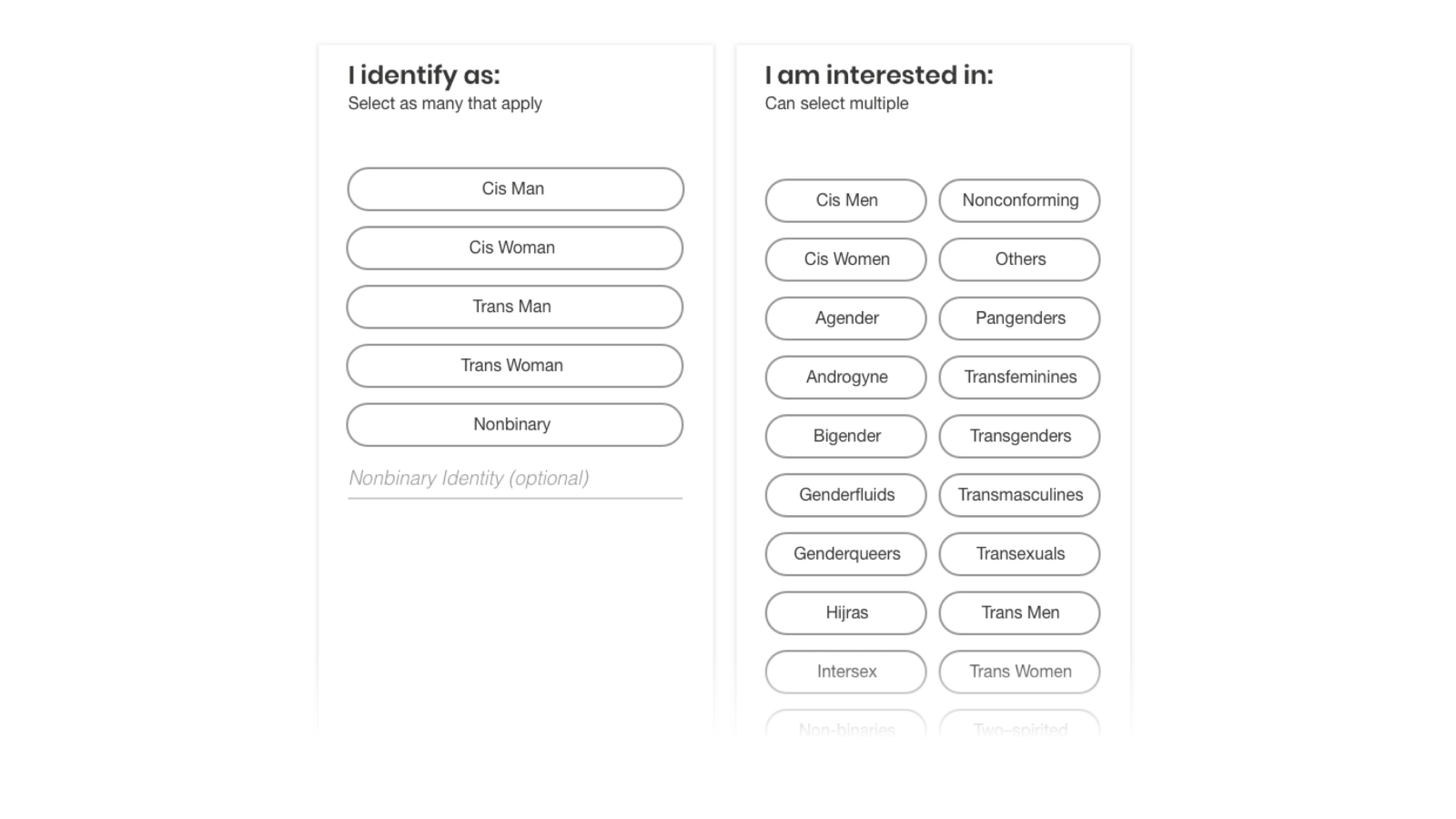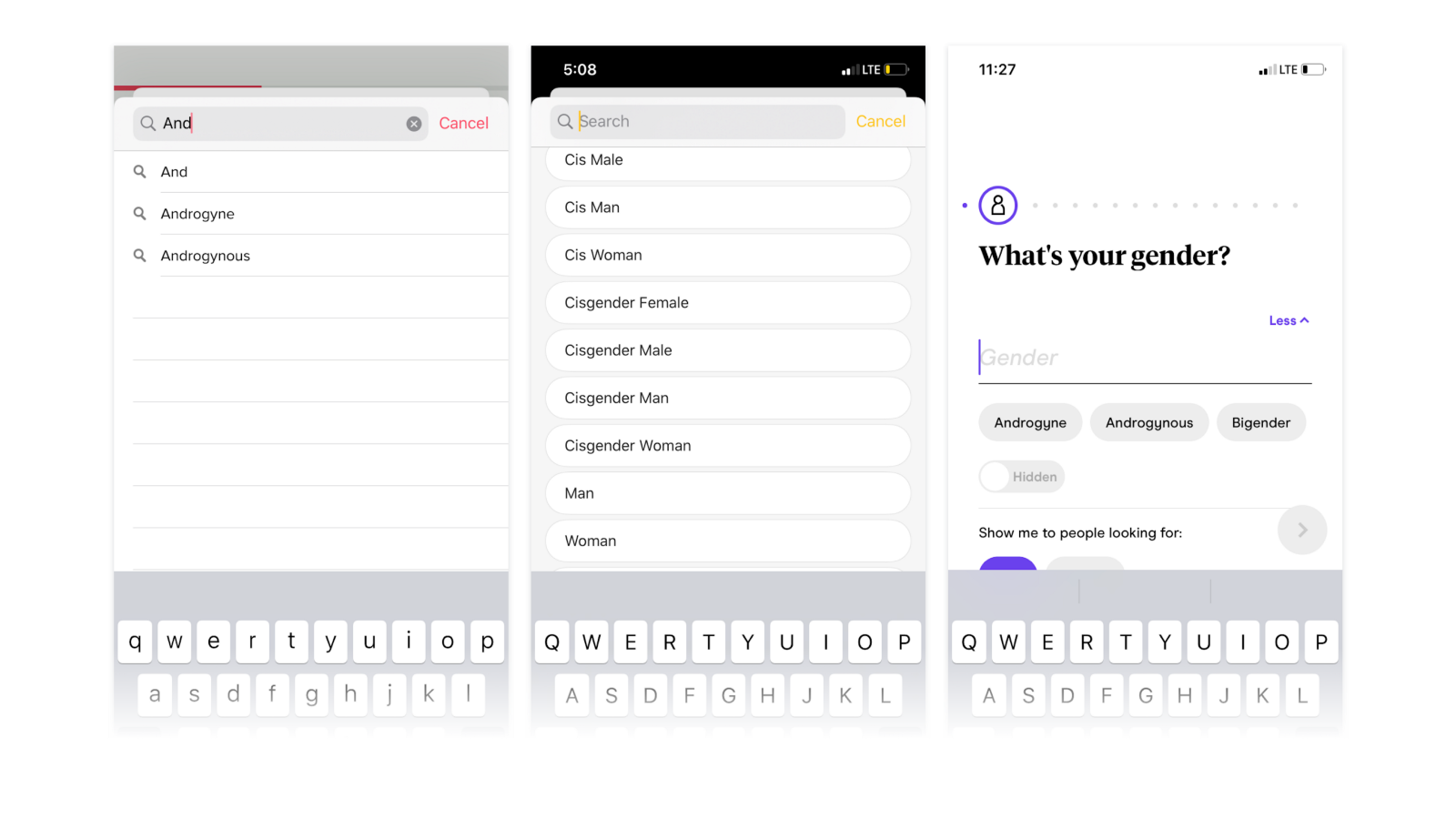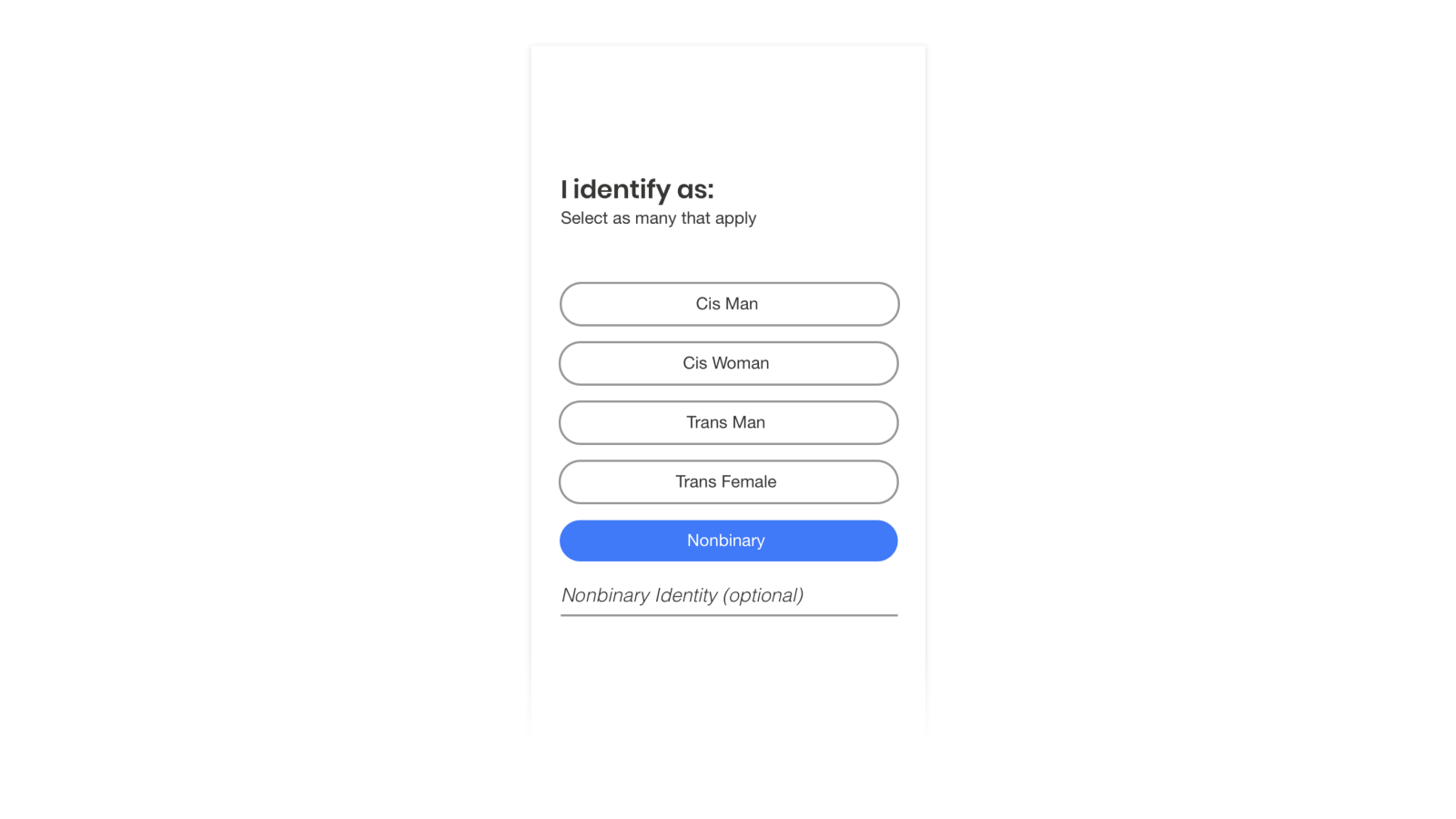Inclusive Dating Apps
introduction
Include more gender and sexuality options within the onboarding experience
One strong theme from the user interviews was that the more options that were in the onboarding experience, the more inclusive the process felt. I asked participants to compare the following two prototypes:

The LGBTQ+ community is diverse, with many different identities. It's important to help each individual state who they are. Having more options for gender and sexuality allows everyone to better describe who they are and what they are looking for.
UI practices when there are too many options
A potential shortcoming of including multiple options is having an overwhelming amount to select from. Hick's law suggests that the more options there are, the longer it will take for someone to make a decision. A couple comments on the prototype with more gender options centered on this information overload.
The goal of an onboarding experience is to timely help the user set up an account, so a plethora of options can seem contradicting. However, there are many interface patterns to support the user while keeping information density low. Consider using autofill, search fields, or typeaheads

Consider Using an Open Form field
Even with as many selections for gender and sexuality, there still may be some identities that are excluded. One consideration is to give people the opportunity to self-identify their gender in an open-form field. This self-description may not affect the matching algorithm, but it can be displayed on a profile to help someone tell their full identity.

Have a Place for Pronouns
Another important component of gender identity is what pronouns a person uses. It might be seen at the end of email signatures, but pronouns can have a place in dating apps too. Having the option to display someone’s pronouns on their profile is an opportunity for better representation.

Power to Show What Appears on the profile
There will be cases where it’s better to talk about an identity in a conversation rather than having it openly displayed on a profile. This particularly important for those who may not be fully out and do not want their identity displayed for anyone to see.
However this will depend on each person. The best way is to give each person the option if gender or sexuality is displayed on their profile. An example can be found below

Each Part of Profile Expresses Identity
One lesson from the user interviews was how people were able to use other parts of the onboarding process to express their identities. Pictures were an important part when expressing gender identity. It’s an opportunity to showcase a person’s best self – with the clothes, makeup, and filters that represent who they are.
Gender and Sexuality Editable after Onboarding
A final consideration is to make gender and sexaulity editable after the onboarding process. This is an important consideration for those who identify as fluid or who are questioning. People who are gender or sexually fluid have varying genders and sexaulities over time. It’s important to give them the option to show who they are at the current moment.
In addition, people who are questioning might tend to change how they identify as they explore their gender and sexual identities. Dating apps should have clear flows on how people might edit these on their profiles.
Further Research to Explore
Further research should explore supporting individual groups in the LGBTQ+ community. A limitation of my work was that it captured one or two perspectives from a gender and sexual identity. It is the beginning step for future endeavors and captured a broad view of the LGBTQ+ community. However, talking to one or two people from a gender or sexual identity may not accurately reflect the problems for everyone of that identity. Research that delves into supporting one identity at a time can reveal richer insights to make an entire product more inclusive. Future research should take a depth-first approach to understand how to make products more inclusive for different gender and sexual identities.
Final Thoughts
We all deserve to find human connection, and the onboarding experience of a dating app is an initial request: “Here’s who I am and the people I am trying to connect with.” To represent different genders and sexualities, it is important to consider what options we provide to self-identify, how to help people construct profiles, and what power we provide to users in onboarding. Thank you for reading, and I hope you learned a bit more about inclusivity in dating apps.